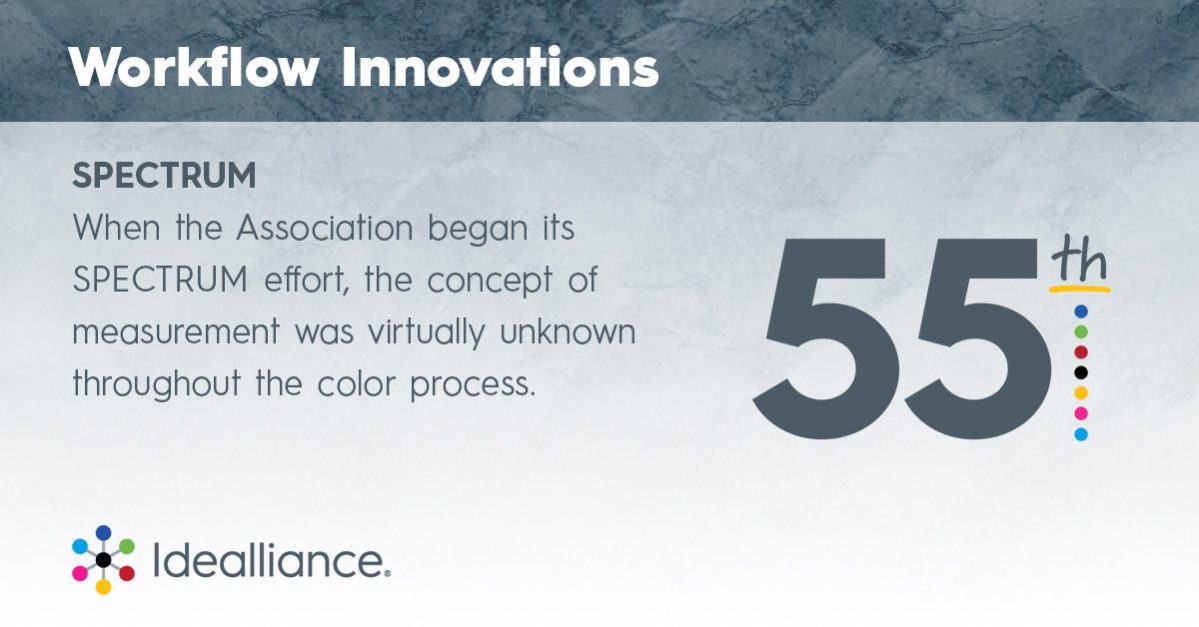Workflows that Enhance Efficiency and Communication
Idealliance understands that productivity and efficiency are at the center of an effective workflow. We have created standards-based, automatable processes, enabling every part of the print supply chain to change, grow, and prosper. Over many decades, as both disrupter and architect, Idealliance has reimagined future workflows, shaping the way our supply chain partners operate. This series explores the history of many of those workflow innovations.
What is Spectrum?
The SPECTRUM Connection
In 1975, at the Association’s annual symposium, David G. Jensen, Senior Vice President, Manufacturing, McGraw-Hill Publications Company, laid down the gauntlet, stating that the lack of color quality and consistency were having a tremendous detrimental effect on the growth of the magazine industry and their printers. He initiated an effort to define a major source of the problem: the lack of uniformity in densities and other color factors in film and proofs for magazine advertising. Based on this challenge, the Association established a pattern of ongoing research and annual reporting at its major industry conference.
Over the next thirty years, the Association pursued its analysis of the color printing process. Publishers, advertising agencies, separation houses, printers, suppliers of equipment, paper, ink, plates and other elements of the process were invited to take part in research and annual reporting within an industry that prohibited the coordination of effort that was required, from agency to pressroom, to realize the desired levels of color quality from a single press and uniformly across all presses.
Through its annual SPECTRUM Conference, Idealliance formed numerous technical committees and research efforts including the definition of the primary properties of paper that could affect color, methods of matching production stock with proofing stock, and the realization of the overriding importance of dot gain to color quality results, recommendations for color separations and film preparation, for total ink coverage, ink properties and ink densities.
When the Association began its SPECTRUM effort, the concept of measurement was virtually unknown throughout the color process. Densitometers, standardized lighting conditions and eventually the role of spectrophotometers were explored and documented. Through the annual cycle of discovery, testing, and reporting the Idealliance SPECTRUM connection advanced the science of print, revolutionized workflows, led to the development of SWOP (Specifications for Web Offset Publications), GRACoL (General Requirements for Applications in Commercial Offset Lithography), G7 and fostered implementation of emerging print technologies.
Workflow Innovations from Idealliance
- The SPECTRUM Connection
- SGML (Standard Generalized Markup Language)
- PRISM (Publishers Requirement for Industry Standard Metadata)
- XML (eXtensible Markup Language)
- DISC (Digital Image Submission Criteria)
- G7 Calibration
- PQX (Print Quality eXchange)
- Mail.XML
- papiNet
- PROSE XML
- Mail.dat
- SWOP (Specification for Web Offset Publications)

